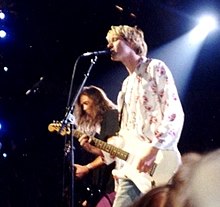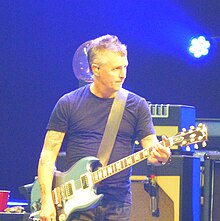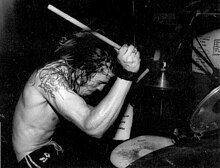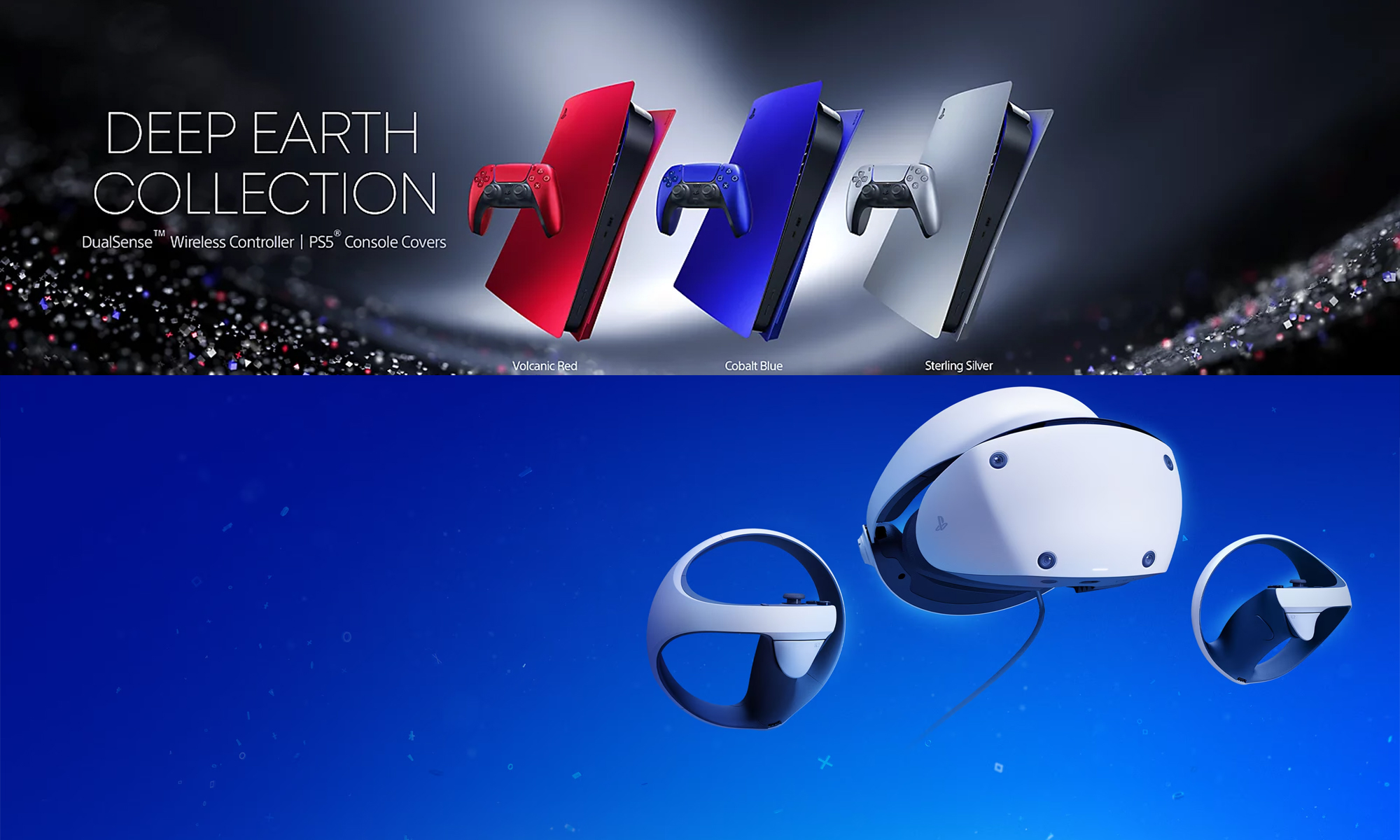Grunge theme by str8_killa69
Download: Grunge.p3t

(1 background)
| Grunge | |
|---|---|
 American rock band Nirvana (pictured in 1992) is the most commercially successful band of the genre, having sold over 27 million albums in the United States alone. | |
| Stylistic origins | |
| Cultural origins | Mid-1980s, Seattle, Washington |
| Derivative forms | Post-grunge |
| Regional scenes | |
| Washington | |
| Other topics | |
Grunge (sometimes referred to as the Seattle sound) is an alternative rock genre and subculture which emerged during the mid-1980s in the U.S. state of Washington, particularly in Seattle and nearby towns. Grunge fuses elements of punk rock and heavy metal.[3] The genre featured the distorted electric guitar sound used in both genres, although some bands performed with more emphasis on one or the other. Like these genres, grunge typically uses electric guitar, bass guitar, drums and vocals. Grunge also incorporates influences from indie rock bands such as Sonic Youth. Lyrics are typically angst-filled and introspective, often addressing themes such as social alienation, self-doubt, abuse, neglect, betrayal, social and emotional isolation, addiction, psychological trauma and a desire for freedom.[5][6]
The early grunge movement revolved around Seattle's independent record label Sub Pop and the region's underground music scene. The owners of Sub Pop marketed the style shrewdly, encouraging the media to describe it as "grunge"; the style became known as a hybrid of punk and metal.[7] By the early 1990s, its popularity had spread, with grunge bands appearing in California, then emerging in other parts of the United States and in Australia, building strong followings and signing major record deals. Grunge was commercially successful in the early-to-mid-1990s due to releases such as Nirvana's Nevermind, Pearl Jam's Ten, Soundgarden's Superunknown, Alice in Chains' Dirt, and Stone Temple Pilots' Core. The success of these bands boosted the popularity of alternative rock and made grunge the most popular form of rock music.[8]
Several factors contributed to grunge's decline in prominence. During the mid-to-late 1990s, many grunge bands broke up or became less visible. Nirvana's Kurt Cobain, labeled by Time as "the John Lennon of the swinging Northwest", struggled with an addiction to heroin before his suicide in 1994. Although most grunge bands had disbanded or faded from view by the late 1990s, they influenced modern rock music, as their lyrics brought socially conscious issues into pop culture[9] and added introspection and an exploration of what it means to be true to oneself.[10] Grunge was also an influence on later genres such as post-grunge.
Origin of the term[edit]

The word "grunge" is American slang for "someone or something that is repugnant" and also for "dirt".[11][12] The word was first recorded as being applied to Seattle musicians in July 1987 when Bruce Pavitt described Green River's Dry as a Bone EP in a Sub Pop record company catalogue as "gritty vocals, roaring Marshall amps, ultra-loose GRUNGE that destroyed the morals of a generation".[13] Although the word "grunge" has been used to describe bands since the 1960s, this was the first association of grunge with the grinding, sludgy sound of Seattle.[14][15] It is expensive and time-consuming to get a recording to sound clean, so for those northwestern bands just starting out it was cheaper for them to leave the sound dirty and just turn up their volume.[14] This dirty sound, due to low budgets, unfamiliarity with recording, and a lack of professionalism may be the origin of the term "grunge".[16]
The "Seattle scene" refers to that city's alternative music movement that was linked to the University of Washington and the Evergreen State College. Evergreen is a progressive college which does not use a conventional grading system and has its own radio station, KAOS. Seattle's remoteness from Los Angeles led to a perceived purity of its music. The music of these bands, many of which had recorded with Seattle's independent record label Sub Pop, became labeled as "grunge".[17] Nirvana's frontman Kurt Cobain, in one of his final interviews, credited Jonathan Poneman, cofounder of Sub Pop, with coining the term "grunge" to describe the music.[18]
The term "Seattle sound" became a marketing ploy for the music industry.[17] In September 1991, the Nirvana album Nevermind was released, bringing mainstream attention to the music of Seattle. Cobain loathed the word "grunge"[3] and despised the new scene that was developing, feeling that record companies were signing old "cock-rock" bands who were pretending to be grunge and claiming to be from Seattle.[19]
Some bands associated with the genre, such as Soundgarden, Pearl Jam and Alice in Chains, have not been receptive to the label, preferring instead to be referred to as "rock and roll" bands.[20][21][22] Ben Shepherd from Soundgarden stated that he "hates the word" grunge and hates "being associated with it."[23] Seattle musician Jeff Stetson states that when he visited Seattle in the late 1980s and early 1990s as a touring musician, the local musicians did not refer to themselves as "grunge" performers or their style as "grunge" and they were not flattered that their music was being called "grunge".[24]
Rolling Stone noted the genre's lack of a clear definition.[25] Robert Loss acknowledges the challenges of defining "grunge"; stating that while he can recount stories about grunge, they do not serve to provide a useful definition.[26] Roy Shuker states that the term "obscured a variety of styles."[17] Stetson states that grunge was not a movement, "monolithic musical genre", or a way to react to 1980s-era metal pop; he calls the term a misnomer mostly based on hype.[24] Stetson states that prominent bands considered to be grunge (Nirvana, Pearl Jam, Soundgarden, Alice in Chains, Mudhoney and Hammerbox) all sound different.[24] Mark Yarm, author of Everybody Loves Our Town: An Oral History of Grunge, pointed out vast differences between grunge bands, with some being punk and others being metal-based.[23]
Musical style[edit]

In 1984, the punk rock band Black Flag toured small towns across the US to bring punk to the more remote parts of the country. By this time, their music had become slow and sludgy, less like the Sex Pistols and more like Black Sabbath. Krist Novoselic, later the bassist with Nirvana, recalled going with the Melvins to see one of these shows, after which Melvins frontman Buzz Osborne began writing "slow and heavy riffs" to form a dirge-like music that was the beginning of northwest grunge.[27] The Melvins were the most influential of the early grunge bands.[3] Sub Pop producer Jack Endino described grunge as "seventies-influenced, slowed-down punk music".[28][29]
Leighton Beezer, who played with Mark Arm and Steve Turner in the Thrown Ups, state that when he heard Green River play Come On Down, he realized that they were playing punk rock backwards. He noted that the diminished fifth note was used by Black Sabbath to produce an ominous feeling but it is not used in punk rock. In the 1996 grunge film documentary Hype!, Beezer demonstrated on guitar the difference between punk and grunge. First he played the riff from "Rockaway Beach" by the Ramones that ascends the neck of the guitar, then "Come On Down" by Green River that descends the neck. The two pieces are only a few notes apart but sound unalike.[30][31] He took the same rhythm with the same chord, however descending the neck made it sound darker, and therefore grunge.[32] Early grunge bands would also copy a riff from metal and slow it down, play it backwards, distort it and bury it in feedback, then shout lyrics with little melody over the top of it.[14]
Grunge fuses elements of punk rock (specifically American hardcore punk such as Black Flag) and heavy metal (especially traditional, earlier heavy metal groups such as Black Sabbath), although some bands performed with more emphasis on one or the other.[8][better source needed] Alex DiBlasi feels that indie rock was a third key source, with the most important influence coming from Sonic Youth's "free-form" noise.[4] Grunge shares with punk a raw, lo fi sound and similar lyrical concerns,[8][better source needed] and it also used punk's haphazard and untrained approach to playing and performing. However, grunge was "deeper and darker"-sounding than punk rock and it decreased the "adrenaline"-fueled tempos of punk to a slow, "sludgy" speed,[33] and used more dissonant harmonies. Seattle music journalist Charles R. Cross defines "grunge" as distortion-filled, down-tuned and riff-based rock that uses loud electric guitar feedback and heavy, "ponderous" basslines to support its song melodies.[34] Robert Loss calls grunge a melding of "violence and speed, muscularity and melody", where there is space for all people, including women musicians.[26] VH1 writer Dan Tucker feels that different grunge bands were influenced by different genres; that while Nirvana drew on punk, Pearl Jam was influenced by classic rock, and that "sludgy, dark, heavy bands" such as Soundgarden and Alice in Chains had a sinister metal tone.[35]
Grunge music has what has been called an "ugly" aesthetic, both in the roar of the distorted electric guitars and in the darker lyrical topics. This approach was chosen both to counter the "slick" elegant sound of the then-predominant mainstream rock and because grunge artists wanted to mirror the "ugliness" they saw around them and shine a light on unseen "depths and depravity" of the real world.[36] Some key individuals in the development of the grunge sound, including Sub Pop producer Jack Endino and the Melvins, described grunge's incorporation of heavy rock influences such as Kiss as "musical provocation". Grunge artists considered these bands "cheesy" but nonetheless enjoyed them; Buzz Osborne of the Melvins described it as an attempt to see what ridiculous things bands could do and get away with.[37] In the early-1990s, Nirvana's signature "stop-start" song format and alternating between soft and loud sections became a genre convention.[8][better source needed]
In the book Accidental Revolution: The Story of Grunge, Kyle Anderson wrote:
The twelve songs on Sixteen Stone sound exactly like what grunge is supposed to sound like, while the whole point of grunge was that it didn't really sound like anything, including itself. Just consider how many different bands and styles of music have been shoved under the "grunge" header in this discography alone, and you realize that grunge is probably the most ill-defined genre of music in history.[38]
Instrumentation[edit]
Electric guitar[edit]

Grunge guitarists like Kurt Cobain often used "offset" guitars like the Fender Jaguar, Fender Jazzmaster, or Mustang. They used primarily offset guitars because at the time they were unpopular enough to offer a new image as opposed to more frequently seen Gibson Les Pauls or Fender Stratocaster and Telecaster used by mainstream pop & rock bands. Being unpopular when grunge started, offset guitars also offered excellent bang for buck.[39] Grunge is generally characterized by a sludgy electric guitar sound with a thick middle register and rolled-off treble tone and a high level of distortion and fuzz, typically created with small 1970s-style stompbox pedals, with some guitarists chaining several fuzz pedals together and plugging them into a tube amplifier and speaker cabinet.[40] Grunge guitarists use very loud Marshall guitar amplifiers[41] and some used powerful Mesa-Boogie amplifiers, including Kurt Cobain and Dave Grohl (the latter in early, grunge-oriented Foo Fighters songs).[42] Grunge has been called the rock genre with the most "lugubrious sound"; the use of heavy distortion and loud amps has been compared to a massive "buildup of sonic fog".[43] or even dismissed as "noise" by one critic.[44] As with metal and punk, a key part of grunge's sound is very distorted power chords played on the electric guitar.[33]
Whereas metal guitarists' overdriven sound generally comes from a combination of overdriven amplifiers and distortion pedals, grunge guitarists typically got all of their "dirty" sound from overdrive and fuzz pedals, with the amp just used to make the sound louder.[42] Grunge guitarists tended to use the Fender Twin Reverb and the Fender Champion 100 combo amps (Cobain used both of these amps).[42] The use of pedals by grunge guitarists was a move away from the expensive, studio-grade rackmount effects units used in other rock genres. The positive way that grunge bands viewed stompbox pedals can be seen in Mudhoney's use of the name of two overdrive pedals, the Univox Super-Fuzz and the Big Muff, in the title of their debut EP Superfuzz Bigmuff.[45] In the song "Mudride", the band's guitars were said to have "growled malevolently" through its "Cro-magnon slog".[46]

Other key pedals used by grunge bands included four brands of distortion pedals (the Big Muff, DOD, and Boss DS-2 and Boss DS-1 distortion pedals) and the Small Clone chorus effect, used by Kurt Cobain on "Come As You Are" and by the Screaming Trees on "Nearly Lost You".[42] The DS-1 (later DS-2) distortion pedal played a key role in Cobain's switching from quiet to loud and back to quiet approach to songwriting.[47] The use of small pedals by grunge guitarists helped to start off the revival of interest in boutique, hand-soldered, 1970s-style analog pedals.[40] The other effect that grunge guitarists used was one of the most low-tech effects devices, the wah-wah pedal. Both "[Kim] Thayil and Alice in Chains' Jerry Cantrell ... were great advocates of the wah wah pedal."[40] Wah was also used by the Screaming Trees, Pearl Jam, Soundgarden, Mudhoney and Dinosaur Jr.[42]
Grunge guitarists played loud, with Kurt Cobain's early guitar sound coming from an unusual set-up of four 800 watt PA system power amplifiers.[40] Guitar feedback effects, in which a highly amplified electric guitar is held in front of its speaker, were used to create high-pitched, sustained sounds that are not possible with regular guitar technique. Grunge guitarists were influenced by the raw, primitive sound of punk, and they favored "... energy and lack of finesse over technique and precision"; key guitar influences included the Sex Pistols, the Dead Boys, Celtic Frost, King's X, Voivod, Neil Young[48] (Rust Never Sleeps, side two), the Replacements, Hüsker Dü, Black Flag, and the Melvins.[49] Grunge guitarists often downtuned their instruments for a lower, heavier sound.[40] Soundgarden's guitarist, Kim Thayil, did not use a regular guitar amplifier; instead, he used a bass combo amp equipped with a 15-inch speaker as he played low riffs, and the bass amp gave him a deeper tone.[40]
Guitar solos[edit]

Grunge guitarists "flatly rejected" the virtuoso "shredding" guitar solos that had become the centerpiece of heavy metal songs, instead opting for melodic, blues-inspired solos – focusing "on the song, not the guitar solo".[50] Jerry Cantrell of Alice in Chains stated that solos should be to serve the song, rather than to show off a guitarist's technical skill.[51] In place of the strutting guitar heroes of metal, grunge had "guitar anti-heroes" like Cobain, who showed little interest in mastering the instrument.[49]
In Will Byers' article "Grunge committed a crime against music—it killed the guitar solo" in The Guardian, he states that while the guitar solo managed to survive through the punk rock era, it was weakened by grunge.[52] He also states that when Kurt Cobain played guitar solos that were a restatement of the main vocal melody, fans realized that they did not need to be a Jimi Hendrix-level virtuoso to play the instrument; he then says this approach helped to make music feel accessible by fans in a way not seen since the 1960s folk music movement.[53] The producer of Nirvana's Nevermind, Butch Vig, stated that this album and Nirvana "killed the guitar solo".[54] Soundgarden guitarist Kim Thayil stated he feels in part to be responsible for the "death of the guitar solo"; he said that his punk rocker aspects made him feel that he did not want to solo, so in the 1980s, he preferred to make noise and do feedback during the guitar solo.[55] Baeble Music calls the grunge guitar solos of the 1990s "raw", "sloppy", and "basic".[56]
Not all sources support the "grunge killed the guitar solo" argument. Sean Gonzalez states that Pearl Jam has plentiful examples of guitar solos.[54] Michael Azerrad praises the guitar playing of Mudhoney's Steve Turner, calling him the "Eric Clapton of grunge", a reference to the British blues guitarist[57] who Time magazine has named as number five in their list of "The 10 Best Electric Guitar Players".[58] Pearl Jam guitarist Mike McCready has been praised for his blues-influenced, rapid licks.[59] The Smashing Pumpkins' guitarist Billy Corgan has been called the "arena rock genius of the '90s" for pioneering guitar playing techniques and showing through his playing skill that grunge guitarists do not have to be sloppy players to rebel against mainstream music.[59] Thayil stated that when other major grunge bands, such as Nirvana, were reducing their guitar solos, Soundgarden responded by bringing back the solos.[55]
Bass guitar[edit]
The early Seattle grunge album Skin Yard recorded in 1987 by the band of the same name included fuzz bass (overdriven bass guitar) played by Jack Endino and Daniel House.[60] Some grunge bassists, such as Ben Shepherd, layered power chords with distorted low-end density by adding a fifth and an octave-higher note to a bass note.[61]
An example of the powerful, loud bass amplifier systems used in grunge is Alice in Chains bassist Mike Inez's setup. He uses four powerful Ampeg SVT-2 PRO tube amplifier heads, two of them plugged into four 1×18" subwoofer cabinets for the low register, and the other two plugged into two 8×10" cabinets.[62] Krist Novoselic and Jeff Ament are also known for using Ampeg SVT tube amplifiers.[63][64] Ben Shepherd uses a 300 watt all-tube Ampeg SVT-VR amp and a 600 watt Mesa/Boogie Carbine M6 amplifier.[65] Ament uses four 6×10" speaker cabinets.[64]
Drums[edit]

In contrast to the "massive drum kits" used in 1980s
